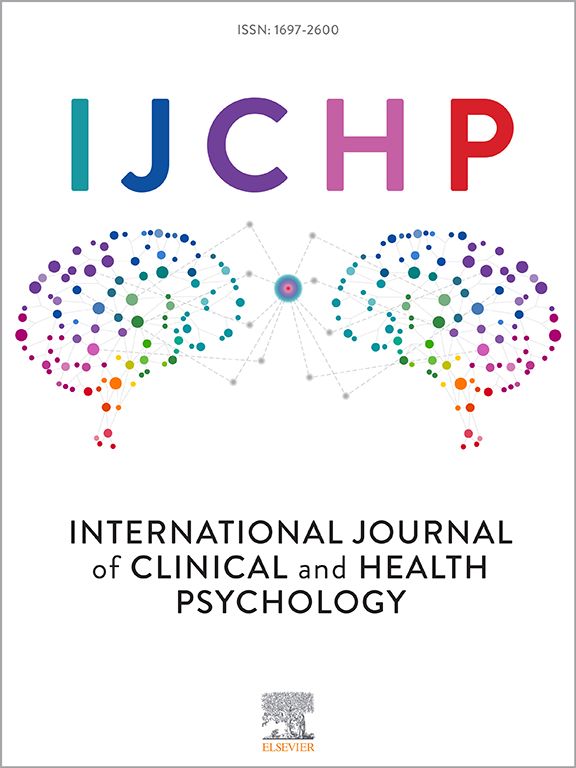Transdiagnostic study of dynamic brain activity and connectivity among people with gambling and internet gaming disorders
IF 4.4
1区 心理学
Q1 PSYCHOLOGY, CLINICAL
International Journal of Clinical and Health Psychology
Pub Date : 2025-01-01
DOI:10.1016/j.ijchp.2025.100547
引用次数: 0
Abstract
Despite both internet gaming disorder (IGD) and gambling disorder (GD) being officially recognized as medical conditions by the World Health Organization, controversies persist. A transdiagnostic study may help inform classification and intervention approaches. IGD and GD may share or have distinct neural and behavioral features. To investigate, resting-state functional magnetic resonance imaging (fMRI) and self-reported behavioral data were collected from 58 individuals with GD, 31 with IGD, and 83 healthy control (HC) participants. After controlling for demographics, both GD and IGD groups scored lower on measures of gambling-related positive play. Neural data revealed reduced brain connectivity in the right rectus/orbital frontal gyrus in GD and IGD groups compared to HC participants. IGD participants displayed increased dynamic brain activity in the left triangular inferior frontal gyrus compared with GD and HC participants. Relatively decreased modular flexibility was also observed in GD but not IGD participants, relative to HC participants. Multiclass classification results showed that the indicators of gambling-related positive play, as well as dynamic brain activity and connectivity patterns, were useful for classifying GD, IGD, and HC participants, outperforming the use of either neural signals or self-report indicators alone. The shared phenotypes of GD and IGD groups provide insight into common features of behavioral addictions, and the combination of self-report and neural measures may provide the most robust approach for classification of diagnostic groups.
赌博和网络游戏障碍患者动态脑活动和连通性的跨诊断研究
尽管网络游戏障碍(IGD)和赌博障碍(GD)都被世界卫生组织正式认定为疾病,但争议仍在继续。一项跨诊断研究可能有助于分类和干预方法。IGD和GD可能具有相同或不同的神经和行为特征。为了进行研究,我们收集了58名GD患者、31名IGD患者和83名健康对照组(HC)参与者的静息状态功能磁共振成像(fMRI)和自我报告的行为数据。在控制了人口统计因素后,GD组和IGD组在与赌博相关的积极游戏方面得分都较低。神经数据显示,与HC参与者相比,GD组和IGD组右额直肌/眶额回的大脑连通性降低。与GD和HC参与者相比,IGD参与者表现出左侧额下回三角形的动态脑活动增加。与HC参与者相比,GD参与者的模块化灵活性也相对降低,而IGD参与者则没有。多类别分类结果表明,与赌博相关的积极游戏指标,以及动态大脑活动和连接模式,对于GD, IGD和HC参与者的分类是有用的,优于单独使用神经信号或自我报告指标。GD和IGD组的共同表型提供了对行为成瘾的共同特征的洞察,自我报告和神经测量的结合可能为诊断组的分类提供了最可靠的方法。
本文章由计算机程序翻译,如有差异,请以英文原文为准。
求助全文
约1分钟内获得全文
求助全文
来源期刊

International Journal of Clinical and Health Psychology
PSYCHOLOGY, CLINICAL-
CiteScore
10.70
自引率
5.70%
发文量
38
审稿时长
33 days
期刊介绍:
The International Journal of Clinical and Health Psychology is dedicated to publishing manuscripts with a strong emphasis on both basic and applied research, encompassing experimental, clinical, and theoretical contributions that advance the fields of Clinical and Health Psychology. With a focus on four core domains—clinical psychology and psychotherapy, psychopathology, health psychology, and clinical neurosciences—the IJCHP seeks to provide a comprehensive platform for scholarly discourse and innovation. The journal accepts Original Articles (empirical studies) and Review Articles. Manuscripts submitted to IJCHP should be original and not previously published or under consideration elsewhere. All signing authors must unanimously agree on the submitted version of the manuscript. By submitting their work, authors agree to transfer their copyrights to the Journal for the duration of the editorial process.
 求助内容:
求助内容: 应助结果提醒方式:
应助结果提醒方式:


